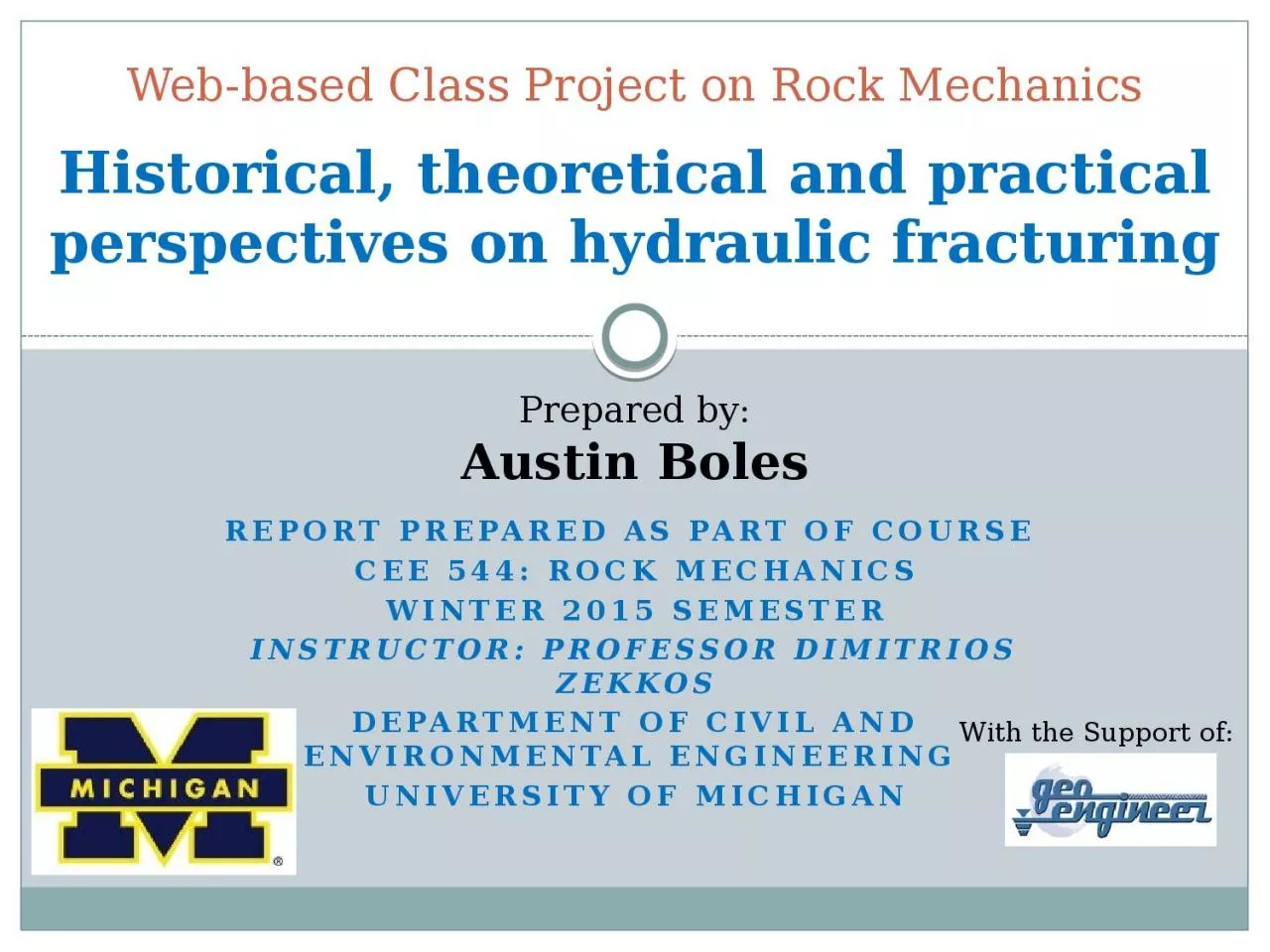

Rock Mechanics Report prepared as part of course CEE 544 Rock Mechanics Winter 2015 Semester Instructor Professor Dimitrios Zekkos Department of Civil and Environmental Engineering University of Michigan ID: 1048547
Download Presentation The PPT/PDF document "Web-based Class Project on" is the property of its rightful owner. Permission is granted to download and print the materials on this web site for personal, non-commercial use only, and to display it on your personal computer provided you do not modify the materials and that you retain all copyright notices contained in the materials. By downloading content from our website, you accept the terms of this agreement.
1. Web-based Class Project on Rock MechanicsReport prepared as part of course CEE 544: Rock MechanicsWinter 2015 SemesterInstructor: Professor Dimitrios ZekkosDepartment of Civil and Environmental Engineering University of MichiganHistorical, theoretical and practical perspectives on hydraulic fracturingPrepared by:Austin BolesWith the Support of:
2. OverviewHistoryUses of hydraulic fracturing (HF)In-situ stress measurementReservoir stimulationConventional vs. HVHFThe theoryThe Mohr circle basicsFracture orientation, regional stress field, pressure considerations, fluid penetrability and viscosity, etc.What really happens in practice…Premature screen-outs, high treating pressures, perforation practices, arbitrarily oriented wellbores, etc.
3. HistoryFirst experimental well in 1949 (Kansas)Replaced explosives as dominant fracturing method19492015http://www.kgs.ku.edu/Publications/PIC/pic32.html
4. In-situ Stress MeasurementAssumptions:Homogeneous, elastic, isotropic rockNeed to know:Tensile strength of rock massFluid pressureResult: initial stresses at the point of fracture.https://clu-in.org/products/newsltrs/tnandt/view.cfm?issue=0204.cfm
5. Reservoir StimulationPurpose is to increase flow of formation fluids (hydrocarbons) to the wellbore. Conventional vs. High Volume Hydraulic Fracturinghttp://www.undeerc.org/bakken/images/content/image1.png
6. TheoryFracture initiation, propagation and orientation are dependent on:Wellbore fluid pressureMechanical properties of the formationPrevailing in-situ stress regimeOrientation of the wellboreFluid penetrability and viscosityMost of the literature relies on Mohr-Coulomb failure criterion
7. Effect of Fluid PressureDifferential stress, orientation of principal stress, cohesive strength important!High differential stress in the tensile regime produces regular, parallel fractures.Hydrostatic conditions produce many randomly oriented fractures.Cosgrove, 1995
8. From a pressure point of view…Hubbert and Willis, 1957*Breakout pressure is less with a penetrating fluid.
9. What happens in practice?Premature screen-outs: breakout pressure required exceeds design pressures of wellbore or wellhead equipment. “Near wellbore tortuosity”High treating pressures: Diagnostic tool to evaluate fracture growth patterns. Simultaneous propagation of multiple fractures.Role of perforation practices: orientation of perforations will determine fracture initiation sites and orientations.Arbitrarily oriented wellbores: Fracture turning, twisting, and linking can all occur.
10. More InformationMore detailed technical information on this project can be found at:http://www.geoengineer.org/education/web-based-class-projects/rock-mechanics